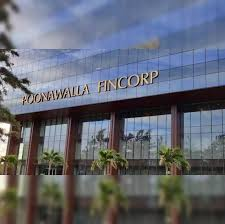Positives And Negatives Of Organic Growth For Financial Institutions
The Positives of Organic Growth
1. Building Trust
Organic growth allows financial institutions to build a solid foundation of trust with their customers. It's like a friendship that grows over time, where customers have faith in the institution's capabilities and offerings.
Also Read: Best Financial Institutions For Pre-Owned Car Loans In India
2. Customer Loyalty
When financial institutions grow organically, they have the opportunity to develop strong relationships with their customers. It's like finding your favorite chai stall that you keep going back to because you know they make the best chai in town.
3. Sustainable Growth
Organic growth is like a slow and steady race where financial institutions can ensure sustainable growth. It's not a quick fix like eating a bowl of instant noodles but more like a wholesome home-cooked meal that keeps you energized for the long run.
4. Better Understanding of Customers
As financial institutions grow organically, they get to know their customers' preferences, needs, and pain points. It's like having a superpower to read minds, enabling institutions to tailor their products and services accordingly.
Also Read: MSMEs And Their Impact On The Indian Economy
The Negatives of Organic Growth
1. Time-Consuming
Organic growth takes time, patience, and effort. It's not a magical spell that instantly transforms a financial institution into a giant. It's more like growing a bonsai tree, where every tiny step counts but requires nurturing and care.
2. Limited Resources
Unlike organic fruits and veggies that can be grown in abundance, financial institutions have limited resources for organic growth. They need to carefully allocate funds, human resources, and technology to ensure efficient and effective growth.
3. Competition
In the jungle of finance, competition is fierce. While financial institutions focus on organic growth, they need to keep an eye on the competition. It's like being a cricket player who can hit sixes but also needs to watch out for those tricky bouncers.
4. Market Volatility
The financial market is like a roller coaster ride, with ups and downs that can make your head spin. During periods of market volatility, organic growth can be a bumpy road. It's like driving on an Indian road during monsoon season - you never know what potholes are waiting to surprise you.
Also Read: Difference Between Gross NPA And Net NPA And Their Impact On Financial Institutions
Conclusion
And there you have it, money maestros! Organic growth for financial institutions has its fair share of positives and negatives. It's like walking a tightrope, where balance is key. So, should financial institutions embrace organic growth? Well, it's like deciding between a biryani with extra spices or a simple, comforting dal rice. The choice ultimately depends on their goals, resources, and risk appetite. Whatever path they choose, may it lead to prosperity, innovation, and a lot of financial magic!




Comments
Post a Comment